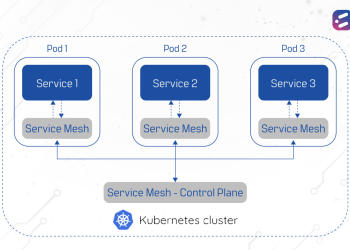Cloud technology allows organizations from around the world to embrace business models that are more agile and responsive. In a world that is becoming increasingly ‘digital-first’, cloud-native applications are on the rise.
With cloud migration, an application is simply re-hosted from on-premise servers and systems to the cloud. This is often called the “lift and shift”. However, the goal is now to build cloud-native applications that are written, tested, and deployed directly on the cloud. But how does going cloud-native benefit your organization?
Here are a few compelling reasons why your next enterprise application should be a cloud-native one.
1. Faster release
Time-to-market is often the most important factor based on which customers choose which service to use. The faster your organization can build and deploy solutions that add value to your customers, the more loyal they become to you. Faster deployment also shows agility and responsiveness, which are important to remain relevant in today’s rapidly changing business world.
When we discuss faster deployment, we need to discuss DevOps since it facilitates collaboration and paves the way for faster delivery. A cloud-native application is often the result of a successful DevOps practice as development, operations and testing teams can easily and efficiently coordinate for every release, even if they are in geographically different locations.
2. Improved customer experience
With the digital transformation that customer experiences are undergoing, it is crucial for organizations to design a customer-centric business model. Constant incremental improvements to an application to improve customer satisfaction are the need of the hour. With cloud-native applications, these changes and iterations are easy to carry out, giving you the competitive edge required to be more engaging and customer-friendly.
3. Ease of management
Cloud technology comes with comprehensive and advanced ecosystems that make infrastructure management easy. The cloud is constantly evolving to accommodate even the most complex applications on its own. PaaS services like Azure Functions and AWS Lambda make it easy for even SMBs with a limited budget to build advanced and technology-driven applications on the public cloud.
With serverless architecture, a cloud service provider can provision the instances required to run the functions of your code without you having to spend on resources. You are not even required to configure the network or allocate storage for running a code – the serverless architecture takes care of everything.
4. Reduced cost
Apart from reducing hardware costs, the cloud also facilitates containerization, a process with which you can manage and secure applications independent of the infrastructure that supports them. Containerization is supported by open-source container-orchestration systems like Kubernetes. Currently, Kubernetes is the industry-standard for managing resources on the cloud.
Containerization allows you to make the most of cloud-native capabilities like serverless and pay-per-use compute time in milliseconds. This adds to the flexibility in pricing for building and deploying cloud-native applications.
5. More reliable services
With cloud-native applications, you can use microservices architecture which can identify and isolate the impact of a failure in order to minimize any downtime. With microservices and containerization, your applications can be built to become fault-tolerant with the ability to self-heal. This also improves user-experience as your customers can enjoy highly reliable performance.
At CloudNow Technologies, we know the ins and outs of cloud technology. With our understanding of the benefits of cloud-native applications, we can build enterprise applications that do the heavy-lifting on the cloud, leaving very little for you to worry about.
Get in touch with us to know more about our application development services.












